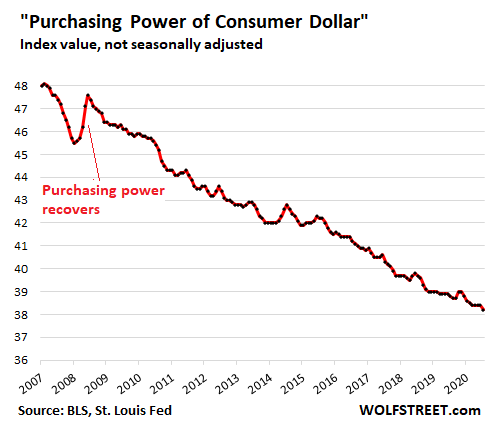From Wolf Street (Feb. 10) a pointer to a part of the release I've been skipping-over for years.
Spiking prices for new and used vehicles under the microscope.
The “Purchasing Power of the Consumer Dollar” – part of the Bureau of Labor Statistics’ Consumer Price Index data released today – is the politically incorrect mirror image of inflation in consumer prices, as measured by the Consumer Price Index (CPI). By wanting to increase consumer price inflation, the Fed in effect wants to decrease the purchasing power of the consumer dollar, to where consumers have to pay more for the same thing. Thereby it wants to decrease the purchasing power of labor paid in those dollars.
And that purchasing power of the dollar in January dropped by 1.5% year-over-year to another record low:

Note how the purchasing power of the dollar recovered for a few months during the Financial Crisis, when consumers could actually buy a little more with the fruits of their labor. The Fed considered this condition a horror show.
Inflation in durable goods, non-durable goods, and services.
The overall CPI for urban consumers, the politically correct way of expressing the decline in the purchasing power of the dollar, rose 1.4% in January, compared to a year earlier.
Each product that is in the basket of consumer goods tracked by the CPI has its own specific CPI. And all these products fall into three categories: durable goods (black line), nondurable goods (green line), and services (red line), with services accounting for 60% of the overall CPI. Here they are, with discussions below:...
....MUCH MORE